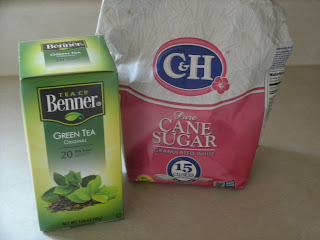Milk Tea
Milk Tea
Milk tea is very popular around the world, and especially East Africa. Many of the countries in that region make black tea, and it pairs well with milk (and sugar). So, who likes black tea with milk?
Malawi. Malawi is a long, narrow country that follows the rift valley. It is 520 miles (840 km) long, and anywhere from 5 to 100 miles (10 to 160 km) wide. Malawi doesn't have a border on an ocean, but Lake Nyasha (AKA Lake Malawi) forms the eastern border of the country, and accounts for over 1/5 of the country's area. While it is a small country, it is divided into 4 climate regions that are largely based on elevation. Since I have been to the rift valley (further north from Malawi), I know that elevation causes large variations in temperature and humidity (and amount of bugs). I preferred being in the mountains since it was cooler and less humid (and had fewer bugs). Agriculture includes a wide range from large tea and tobacco estates down to subsistence farms.
Mozambique (covered in the Swahili ginger milk tea post).
Zambia. I didn't find a good video showing how tea was prepared. My source here was a video on YouTube that showed morning tea in a game reserve. It looked like black tea with milk. I really liked the video because of the bird I could hear in the background. I don't know the name of the bird, or what it looks like, but I woke up hearing that bird every morning in Kenya (and it is often heard in the background of wildlife documentaries in the region). It is a landlocked country just north of Mozambique and Zimbabwe. Zambia is home to Victoria Falls. It seemed to me that there was something I should remember about Victoria Falls (I think it was the world's highest waterfall), so I did a little extra reading. It's twice the width and depth of Niagara falls. It is 355 feet (108 meters) high. For reference, I remember seeing Hurricane Gulch on the Parks Highway in Alaska, and that was 300 feet deep. I think the bridge going over it is shorter than the depth of the gulch, and that was amazingly deep. I couldn't take a picture of the bottom of the gulch because my camera refused to focus. That would be an impressive waterfall to see!
They also grow coffee and have a tea estate in the north part of the country. While the country looks like there wouldn't be much fishing (since there are no large lakes on the map), apparently the fishing is pretty good due to many small lakes, seasonal flooding, swamps, and rivers. Fossils and artifacts from human ancestors that are thought to be 100,000 years old (or older) have been discovered in this region.
Zimbabwe. Zimbabwe is a landlocked country just north of South Africa, sandwiched between Botswana and Mozambique. It was once known as Rhodesia. One interesting fact is that they have 16 official languages in their country. Coffee is a popular export, and there are remnants of stone age cultures from 500,000 years ago in this region.
Now, let's make some tea. This is a rather simple procedure. Water, black tea, and milk. Sugar if you want it. I used 1.5 cups of water (about 400 ml), 3/4 cup (175 - 200 ml) of milk, and 2 heaping teaspoons of black tea. I used my Kenyan tea. Yes, milk tea with sugar is widely popular in Kenya, but I have a different post planned for them.
I brought the water to a boil, added my tea leaves, and simmered for 5 minutes. Then I added the milk and warmed through. Then all you have to do is strain it into your favorite mug and enjoy.
This tastes so much like Kenya. The only difference is that the milk isn't chunky. In all truth, the milk tea didn't taste sour even if the milk was a bit chunky, and I figured that boiling the milk would have killed the bacteria in it (and it would have been really rude not to drink it at our welcome to the university gathering, and all the other gatherings where tea was served to us). All the people who lived in the region drank it that way and lived, I figured I would do the same. As it turns out, I didn't get sick from it, so it all worked out. The university I attended in Kenya was an agricultural university, and we were told before we left the states that dairy products labeled with the university name were safe to consume. Early on in our trip, we were given a tour of their cattle and milking operation. They did have mechanical milking machines and refrigeration, but this region of the world also has an extensive culture around preserving milk without refrigeration. If you watch the Bizarre Foods shows from this region of Africa, they get into this aspect of the culture quite a bit. But here in the sates, we take our milk creamy, not chunky.





A lot of old recipes list ways to use up soured milk.
ReplyDeleteI've heard that sour milk makes really fluffy pancakes. Our society has forgotten how to use everything like it used to.
Delete